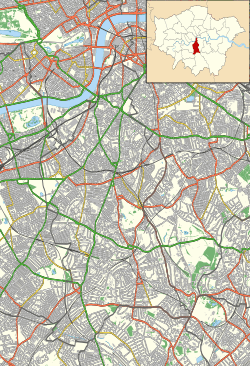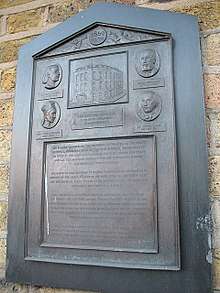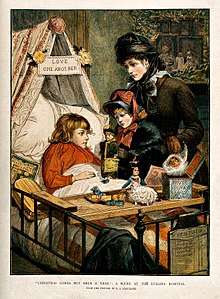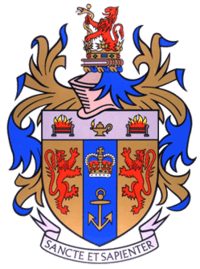Evelina London Children's Hospital
| Evelina London Children's Hospital | |
|---|---|
| Guy's and St Thomas' NHS Foundation Trust | |
 | |
 Evelina London Children's Hospital | |
 Shown in Lambeth | |
| Geography | |
| Location |
London, SE1 United Kingdom |
| Organisation | |
| Care system | NHS England |
| Hospital type | Specialist |
| Affiliated university | King's College London |
| Services | |
| Emergency department | Yes |
| Beds | 140 |
| Speciality | Children's hospital |
| History | |
| Founded | 1869, 2005 relocation |
| Closed | 1976 on original site |
| Links | |
| Website |
www |
Evelina London Children's Hospital is a specialist NHS hospital in London. It is administratively a part of Guy's and St Thomas' NHS Foundation Trust and provides teaching hospital facilities for London South Bank University and King's College London School of Medicine. Formerly housed at Guy's Hospital in Southwark, it moved to a new building alongside St Thomas' Hospital in Lambeth on 31 October 2005.
History


The hospital was founded in 1869 (as Evelina Hospital for Sick Children) by Baron Ferdinand de Rothschild, whose wife, Evelina, and their child had died in premature labour.[1] It was established in a purpose-built hospital in Southwark Bridge Road, Southwark, opposite what was originally the headquarters of the London Fire Brigade at 94 Southwark Bridge Road.[1] It was brought under the management of Guy's Hospital in 1947 and became part of the National Health Service in 1948.[1] In 1976 the original hospital building was closed, and the children's wards were moved to the newly built Guy's Tower.[1]
In 1999 a decision was made to re-establish Evelina Children's Hospital as a new specialist hospital for all children's services at Guy’s and St Thomas', in Lambeth, on the site of a former nurses' home. An architectural design competition was managed by RIBA Competitions and won by Hopkins Architects and engineers Buro Happold. Davis Langdon provided quantity surveying and employer's agent services. Construction began in 2002, and the building was completed in 2004, ready for fitting out. This is one of the few hospitals in the world to be built not around the doctor's perspective, but around the patient's. The building won the IStructE Award for Education or Healthcare Structures in 2006.[2]
Funding
Although a part of the NHS, the £60 million building cost of the new Evelina London Children's Hospital was largely paid for with private funds, with £50 million coming from the independent Guy's and St Thomas' Charity[3] (the successor to the endowments of Baron Ferdinand de Rothschild, amongst others), and £10 million from NHS budgets and a major fundraising campaign by the Evelina London Children's Hospital Appeal.[4]
South Thames Retrieval Service
South Thames Retrieval Service (STRS) is a children's acute transport service which specialises in the inter-hospital transfer of critically ill children in London (south of the River Thames). It operates from the children's intensive care unit of the Evelina London Children's Hospital. The unit is the lead centre for children's intensive care in the South Thames region and manages the clinical network for children's (paediatric) intensive care via the retrieval service, in conjunction with the intensive care units at St George's Hospital and King's College Hospital. With one phone call to the emergency number, a clinician in a South Thames hospital, can source clinical advice, a PICU bed and a transport team as necessary. STRS can then also coordinate specialist service input (e.g. cardiology).[5]
See also
References
- 1 2 3 4 "Evelina London Children's Hospital". Lost Hospitals of London. Retrieved 17 May 2018.
- ↑ "Evelina Children's Hospital" (PDF). Buro Happold. Retrieved 17 May 2018.
- ↑ Charity Commission. The Guy's and St Thomas' Charity and other related charities, registered charity no. 251983.
- ↑ "Support Evelina London Children's Hospital". Retrieved 12 August 2017.
- ↑ "South Thames Retrieval Service". Retrieved 12 August 2017.
